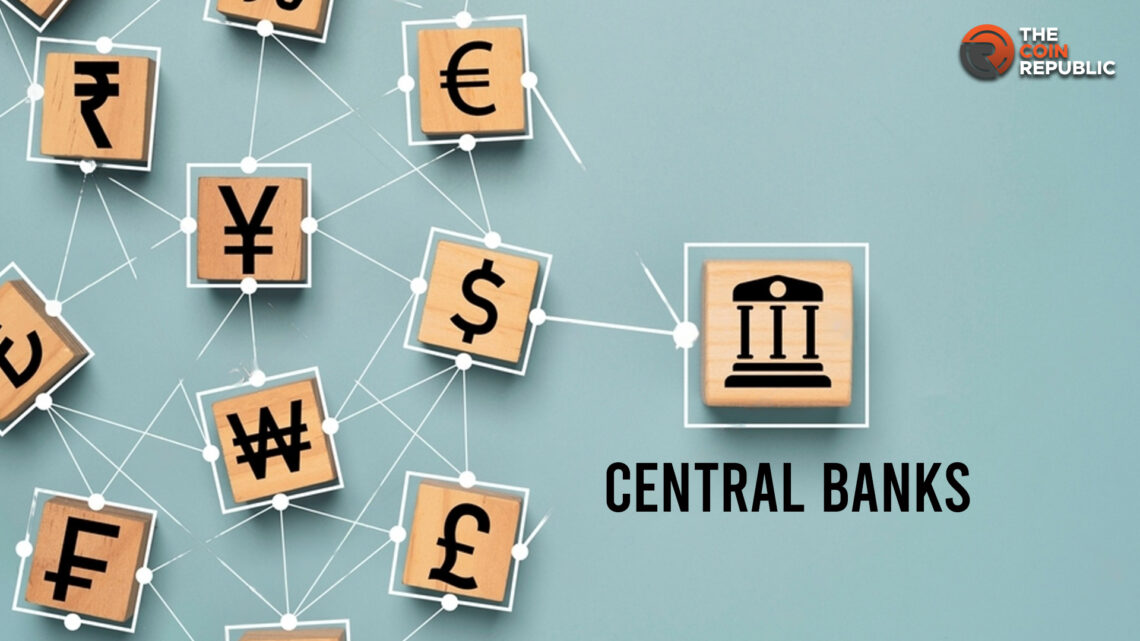- 1 Central banks control money supply and interest rates for economic stability.
- 2 Inflation control is vital; central banks aim for stable inflation.
- 3 Balancing objectives like employment and inflation is central to effective central banking.
Central banks are vital institutions that steer the monetary policy of nations and promote economic stability. Their primary duties involve controlling the money supply, setting benchmark interest rates, and maintaining healthy inflation levels.
Tools and Strategies for Central Bank Monetary Policy
One of the main devices central banks employ to implement monetary policy is regulating the supply of money in circulation. The money supply represents the total currency stock and other liquid assets available in an economy at any given time. Central banks monitor the money supply meticulously and use various tools to expand or contract it as needed to even out the business cycle.
Open market operations and once central banks buy securities from them; money is transferred to their accounts are the principal tool used by central banks to regulate the money supply. Money is transferred to banks when the central bank buys securities from them. This adds to the available funds in the economy. When securities are sold, however, that money is taken out of circulation and the supply drops. When done correctly, open market operations allow central banks to drain surplus liquidity during economic booms and inject it during recessions to stimulate growth.
Central banks mandate the fraction of deposits commercial banks must hold in reserves and not lend out. This is termed the reserve requirement. Lowering the reserve requirement frees up a bigger share of deposits banks can lend out, increasing the money supply. Raising it ties up more deposits as reserves and shrinks the money supply. Adjusting reserve requirements gives central banks another tool to regulate money creation by private banks and control inflationary pressures.
The discount rate is the interest rate central banks charge commercial banks who borrow funds directly from them through the discount window lending facility. Cutting the discount rate lowers borrowing costs for banks, allowing them to extend more loans and boost the money supply. Hiking the discount rate makes central bank funds costlier for banks, discouraging borrowing and reining in the growth of the money supply. Changes to the discount rate also serve as a symbolic message on the central bank’s monetary policy stance.
Central banks stipulate capital reserve mandates that compel banks to hold a minimum level of capital as a share of their risk-weighted assets. Increasing capital requirements means banks must retain more capital relative to the loans they grant, limiting the amount they can lend out and the size of the money supply. Easing capital reserve regulations lets banks expand lending more freely with a lower capital base and grow the money supply faster.
Besides these tools, central banks also use less direct moral suasion measures to influence commercial bank lending behavior and money creation. Overall, the central bank closely tracks macroeconomic data on output, unemployment and inflation to determine the appropriate level of money supply needed for stability and uses its policy levers to expand or shrink it accordingly.
Central Bank Influence on Interest Rates and Inflation Control
Central banks possess extensive influence over market interest rates and leverage this to achieve their goals of maximizing employment while maintaining modest, steady inflation. The primary interest rate central banks directly control is the overnight interbank lending rate – the rate at which major commercial banks borrow and lend reserve balances held at the central bank. This anchors other short-term interbank rates. Central banks can tighten or relax conditions in interbank money markets by raising or lowering this rate.
Banks can save money on borrowing if the interbank rate drops. This makes them lend more, increasing the money supply and improving the economy in general Conversely, hiking the interbank rate makes bank borrowing more expensive. This restricts lending, slows the growth of the money supply, and cools economic activity. The central bank calibrates the interbank rate based on its assessment of current inflation and growth conditions.
The discount rate also significantly influences commercial bank prime rates and other long-term market interest rates. Lowering the discount rate reduces borrowing costs economy-wide, spurring consumption and investment spending. Increasing it makes borrowing pricier for firms and households, dampening spending and slowing the economy. Changes to the discount rate serve as a clear signal of the central bank’s monetary policy stance.
Beyond directly controlled rates, central banks also steer market interest rates through open market operations. Purchasing securities injects money into the system, putting downward pressure on rates, while bond sales sop up excess liquidity and nudge rates higher. Overall, interest rates represent a crucial channel for central banks to transmit monetary policy impulses through the economy.
A core mandate for most modern central banks is promoting price stability by keeping inflation low, stable and predictable. Inflation refers to the overall increase in prices of goods and services across an economy over time. Mild inflation is a natural occurrence in growing economies. However, high or volatile inflation disrupts the economy and corrodes living standards.
Unanticipated bouts of high inflation reduce the purchasing power of a currency, eroding real incomes and savings. It also skews relative prices and asset values, sowing doubts among consumers and firms, deterring investment and causing unemployment. On the other hand, excessively low inflation can also be problematic, constraining central banks from using monetary stimulus during economic slowdowns.
To fulfill their price stability objective, central banks closely monitor inflation using indexes like the Consumer Price Index (CPI) that track overall changes in the price level. When inflation appears to be accelerating faster than desired, central banks may employ contractionary monetary policies to cool the economy. This usually involves hiking interest rates to discourage borrowing and spending and reduce aggregate demand pressures.
Conversely, if inflation seems too low, central banks can use expansionary tools to give activity a boost, like lowering interest rates to incentivize borrowing and investment. Overall, prudent central banks aim to maintain the inflation rate at around a modest 2-3% target, fostering steady growth without huge price swings. This anchoring of inflation expectations is pivotal to financial stability.
While managing inflation is central banks’ predominant focus, they also consider objectives like maximizing employment and output, ensuring financial stability, and smoothing out business cycles. This requires adept balancing of sometimes competing goals. Persistently high unemployment suggests the economy is underperforming, requiring monetary stimulus to boost demand. But filling jobs may fuel inflation, necessitating higher interest rates to cool things down.
Likewise, bubbles may form in certain asset markets like housing or stocks when rates stay too low for too long. However, aggressive rate hikes to quell bubbles may hamper broader economic growth. Central banks must, therefore, carefully weigh tradeoffs and be nimble in deploying tools to achieve optimal outcomes on both the inflation and employment front.
Policy Independence and Communication
To make tough decisions on monetary policy wisely, central banks need autonomy from short-term political pressures. Democratically elected governments often have incentives to keep interest rates artificially low to juice growth before elections. This can lead to runaway inflation down the line. Independent central banks can take a more far-sighted approach focused on long-run stability.
Clear communication is also crucial for effective central banking. Central banks must telegraph policy moves and guidance through statements, reports and speeches so businesses and consumers can calibrate expectations. Market markets function more efficiently when participants understand the central bank’s reaction function and policy trajectory.
In Conclusion, central banks play an indispensable role in developed economies, actively manipulating the money supply, benchmark interest rates and inflation to foster broadly shared prosperity. Their prudent stewardship of monetary policy levers impacts employment, prices, financial markets and living standards. While not without flaws, independent central banks have facilitated decades of strong growth and low inflation in many countries.

With a background in journalism, Ritika Sharma has worked with many reputed media firms focusing on general news such as politics and crime. She joined The Coin Republic as a reporter for crypto, and found a great passion for cryptocurrency, Web3, NFTs and other digital assets. She spends a lot of time researching and delving deeper into these concepts around the clock, and is a strong advocate for women in STEM.


 Home
Home News
News






